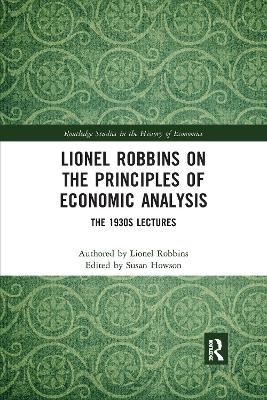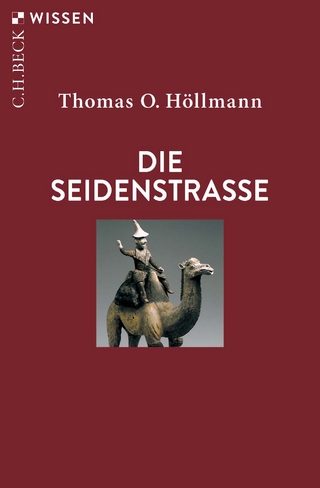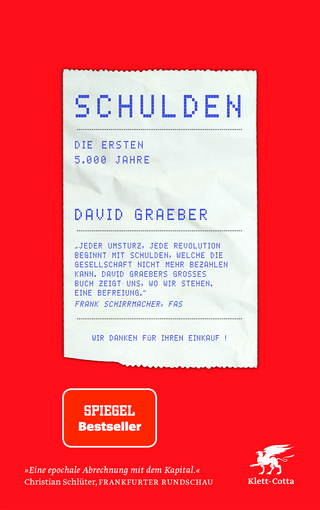
Lionel Robbins on the Principles of Economic Analysis
Routledge (Verlag)
978-0-367-66713-9 (ISBN)
Lionel Robbins (1898–1984) is best known to economists for his Essay on the Nature and Significance of Economic Science (1932 and 1935). To the wider public he is well known for the 'Robbins Report' of the 1960s on Higher Education, which recommended a major expansion of university education in Britain. However, throughout his academic career – at Oxford and the London School of Economics in the 1920s, and as Professor of Economics at the School from 1929 to 1961 – he was renowned as an exceptionally gifted teacher. Generations of students remember his lectures for their clarity and comprehensiveness and for his infectious enthusiasm for his subject.
Besides his famous graduate seminar his most important and influential courses at LSE were the Principles of Economic Analysis, which he gave in the 1930s and again in the late 1940s and 1950s, as well as the History of Economic Thought, from 1953 until long after his official retirement. This book publishes for the first time the manuscript notes Robbins used for his lectures on the Principles of Economic Analysis from 1929/30 to 1934/40. At the outset of his career he took the advice of a senior colleague to prepare his lectures by writing them out fully before he presented them; the full notes for most of his pre-war lectures survive and are eminently decipherable.
Since he made two major revisions of the lectures in the 1930s the Principles notes show both the development of his own thought and the way he incorporated the major theoretical innovations made by younger economists at LSE, such as John Hicks and Nicholas Kaldor, or elsewhere, notably Joan Robinson. He intended to turn his lecture notes into a book, abandoning the project only when he was asked to chair the Committee on Higher Education in 1960. This volume is not exactly the book he wanted to write, but it is a unique record of what was taught to senior undergraduate and graduate economists in those 'years of high theory'. It will be of interest to all economists interested in the development of economics in the twentieth century.
Susan Howson is Emeritus Professor of Economics at the University of Toronto and a Fellow at Trinity College Toronto, Canada. She is the author of the distinguished biography, Lionel Robbins, published in 2011. Having written many articles on the history of economic policy in Britain, on the life and work of Lionel Robbins and on James Meade, she is now working on a biography of James Meade.
EDITOR'S INTRODUCTION
PART I 1929-31
INTRODUCTION
1. The framework of economic analysis
2. The conception of equilibrium
GENERAL OUTLINE OF EQUILBRIUM ANALYSIS
3. Equilibrium of simple exchange
4. Equilibrium of simple exchange (continued)
5. Equilibrium of multiple exchange
6. Equilibrium of production: Factors fixed
7. Equilibrium of production: Factors fixed (continued)
8. Production: Factors flexible
9. Production: Factors flexible: labour supply (continued)
10. Equilibrium of production: Factors flexible: material factors
11. Equilibrium of production: Factors flexible: material factors (continued)
12. Interest rates, capitalization & the equilibrum of production through time
13. The supply of material factors (continued)
14. Supply of material factors (continued)
15A. General view of equilibrium theory
15B. Price relationships in the economic equilibrium [1931/2]
SPECIAL TOPICS
16. Consumers surplus
17. The laws of returns
18. Returns and costs
19. Costs: Definitions and the conditions of equilibrium
20. Costs: The supply curve and variations in demand
21. Rent, quasi rent and costs
22. Profits
PART II 1932/3-1934/5
INTRODUCTION
1. Preliminary injunctions
2. Nature of economic analysis
3. The divisions of equilibrium analysis
GENERAL OUTLINE OF EQUILIBRIUM ANALYSIS
4. Valuation and exchange: Individual disposition of goods
5. Valuation and exchange: Simple exchange
6. Production: Introduction
7. Production: Factors fixed (Acapitalistic)
8. Multiple exchange Valuation and exchange: Capitalistic production
9. The theory of interest
10. The theory of capital
PART III 1935/6-1939/40
INTRODUCTION
1. The development of scientific economics
2. XIXth century economics
3. The subject matter of economics (1934/5)
4. Ends and Means
STATICS
5. Valuation and Exchange: Introduction
6. Individual valuation
7. Exchange continued: Barter between two individuals
8. Multiple exchange
9. Production: Factors Fixed: Simple
10. Production: Non competing groups
11. Joint Production: Fixed Coefficients
12. Joint Production: The Laws of Returns
13. Joint Production
14. Monopoly
15. Monopoly and Distribution
16. Complex Production (continued): Joint Supply
17. Complex Production: Oligopoly
18. Capitalist Production: Conceptual
19. Time Preference
20. Capitalistic Production: Conditions equilibrium
21. Equilbrium Capitalist Production
22. Production: Labour Supply
23. The Theory of Rent
COMPARATIVE STATICS
24. Differences in Demand for particular commodities: A. Commodity Price
25. Differences in Demand for particular commodities: B. Factor Prices
26. Differences in Conditions of Supply: (a) Differences in Commodity Supply
27. Differences in Conditions of Supply: (b) Differences in Commodity Supply (continued
| Erscheinungsdatum | 01.10.2020 |
|---|---|
| Reihe/Serie | Routledge Studies in the History of Economics |
| Verlagsort | London |
| Sprache | englisch |
| Maße | 156 x 234 mm |
| Gewicht | 453 g |
| Themenwelt | Geschichte ► Teilgebiete der Geschichte ► Wirtschaftsgeschichte |
| Wirtschaft ► Allgemeines / Lexika | |
| Wirtschaft ► Volkswirtschaftslehre | |
| ISBN-10 | 0-367-66713-4 / 0367667134 |
| ISBN-13 | 978-0-367-66713-9 / 9780367667139 |
| Zustand | Neuware |
| Informationen gemäß Produktsicherheitsverordnung (GPSR) | |
| Haben Sie eine Frage zum Produkt? |
aus dem Bereich


